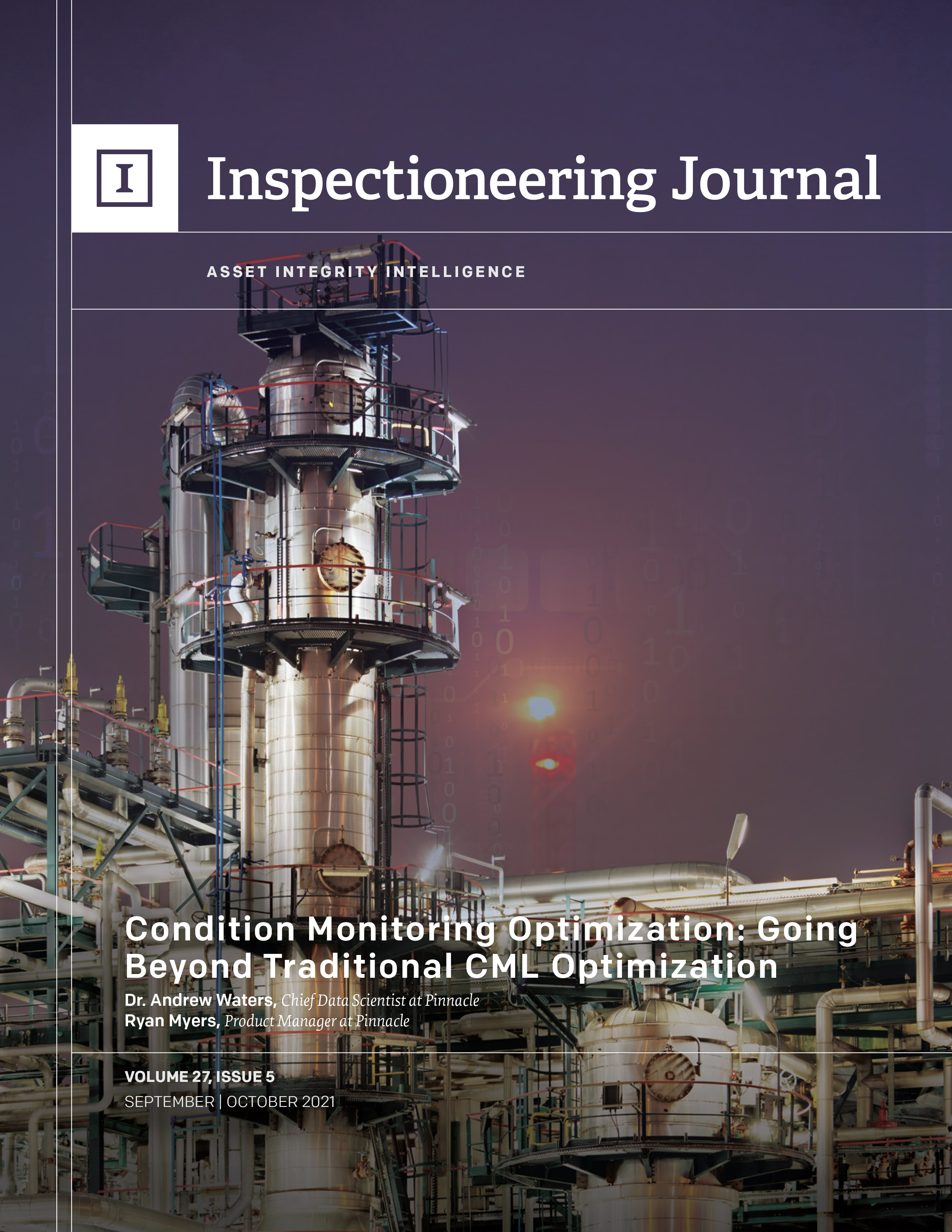Condition Monitoring Optimization: Going Beyond Traditional CML Optimization
Inspectioneering Journal, Sep/Oct 2021 Issue
Traditional CML optimization programs are often used to determine the minimum number of CMLs needed to accurately monitor active damage mechanisms and identify susceptibilities prior to an asset failure. These optimization programs are typically concerned with eliminating CMLs by intelligently defining inspection scope, techniques, and intervals that prevent unexpected failures. The desired result is the identification of inspection program deficiencies and specific changes required to effectively assess risk with confidence.
This article describes condition monitoring optimization as a data-driven methodology by which inspection scope, techniques, and intervals are intelligently determined and dynamically updated to maximize reliability and return on investment (ROI) as new information becomes available. Using this methodology, data collected through inspection is used to improve confidence in the asset damage state and to determine situations in which additional data is required, inspection adds little or no value, or corrective maintenance is the appropriate action.
This article is the first of a two-part series on condition monitoring optimization. In this article, we will:
- Review probabilistic models for determining the end of useful life for individuals CMLs
- Provide a description of potential methodologies for performing condition monitoring optimization
- Demonstrate the validity of the approach using a real-world case study

Meet the Authors
Want to further explore how to leverage data science to drive more value from your data?
Reach out to our authors, Vyacheslav Nadvoretskiy or Andrew Waters.
Stay in the know.
Providing data-driven insights, perspectives, and industrial inspiration from the forefront of the reliability transformation.